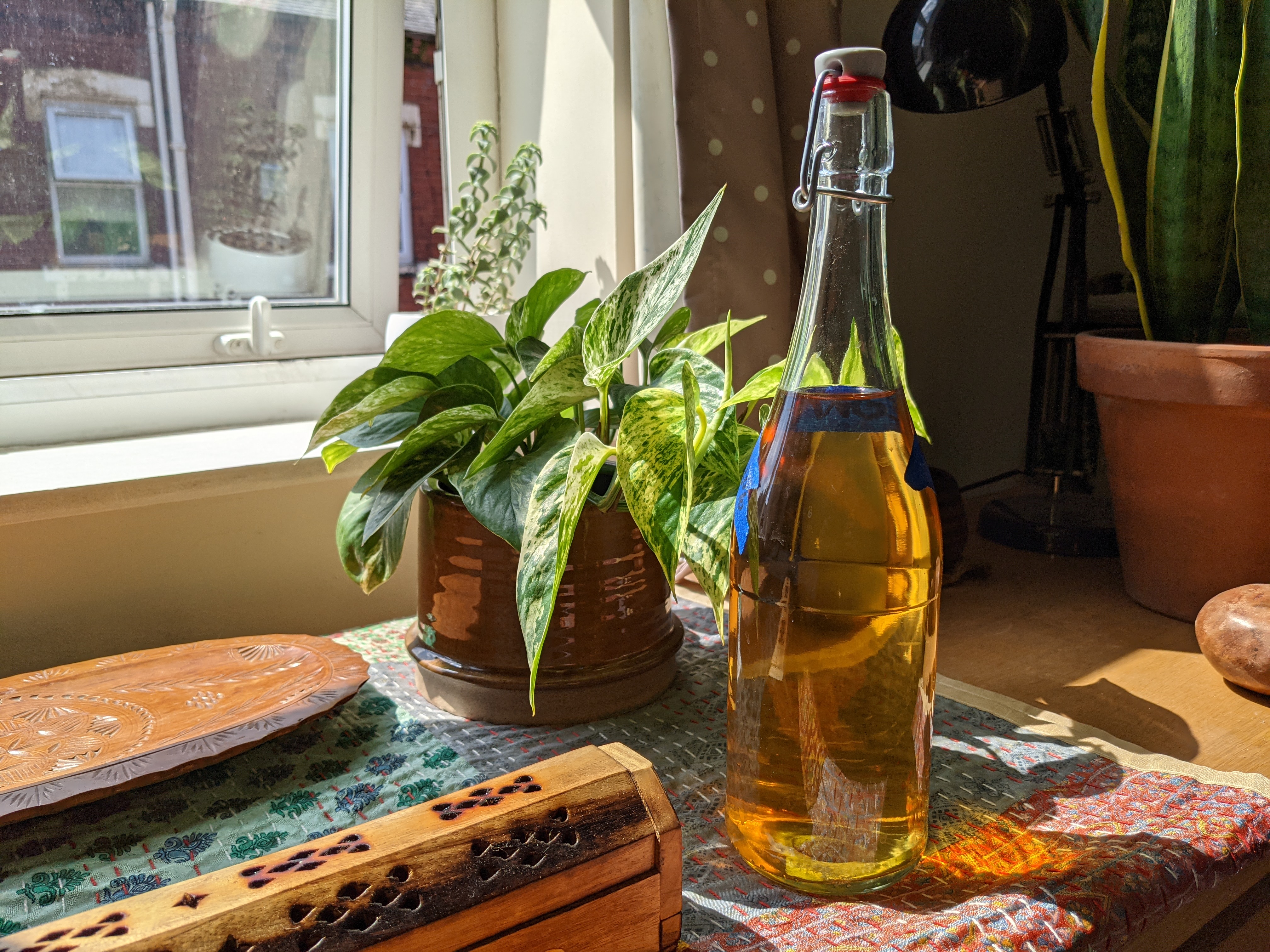
Ingredients
- 80g Dandelion Petals
- 750g Dextrose
- 350g Honey
- 350g Golden Raisins
- 1 Orange (zest and juice)
- 1 Lemon (zest and juice)
- Wine yeast
- Sanitiser
Method
-
First I had to gather the dandelions, ideally you would do this in April or May when there are plenty, and before they go to seed. I ended up with around 80g of petals with the green parts trimmed off, I would next time try to collect more.
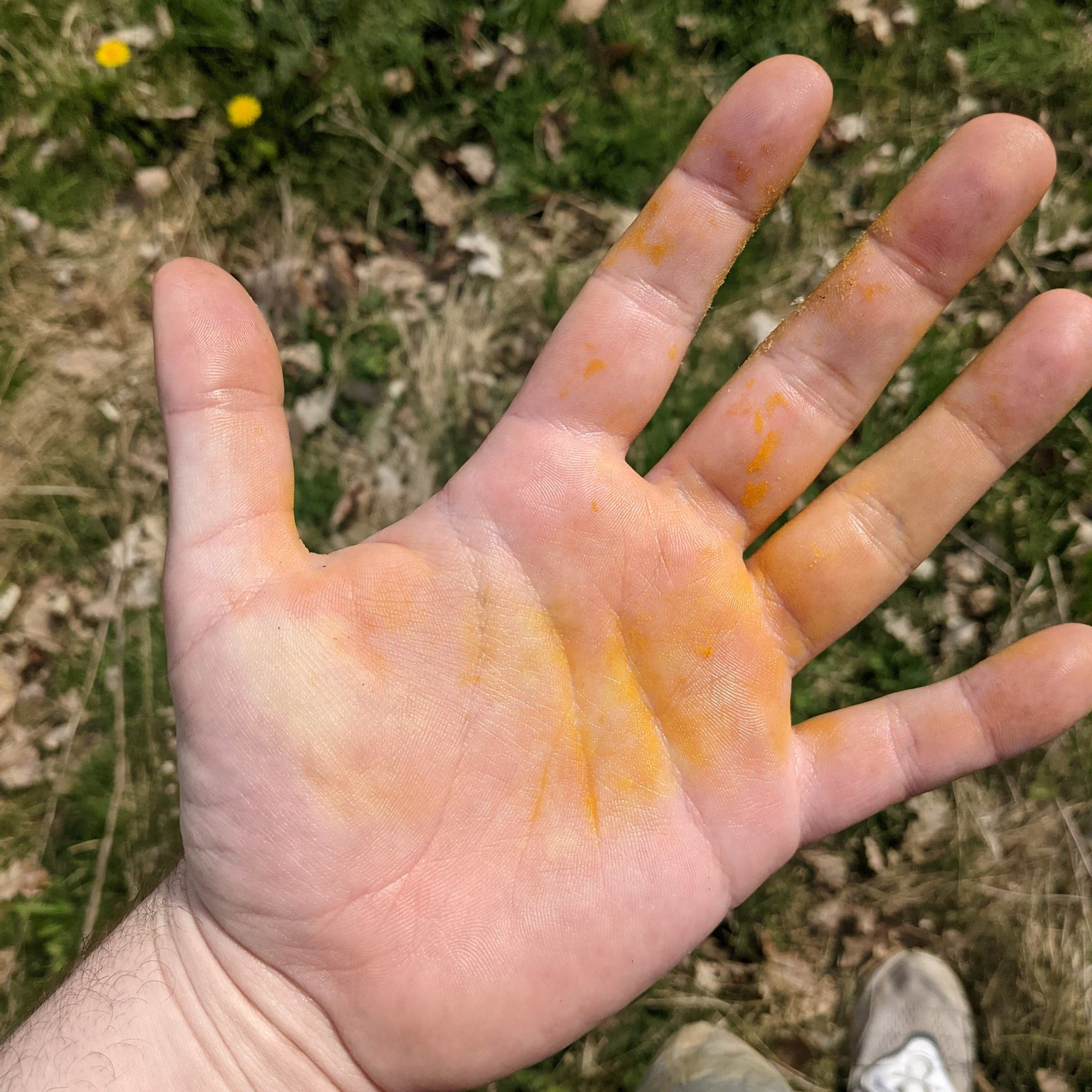

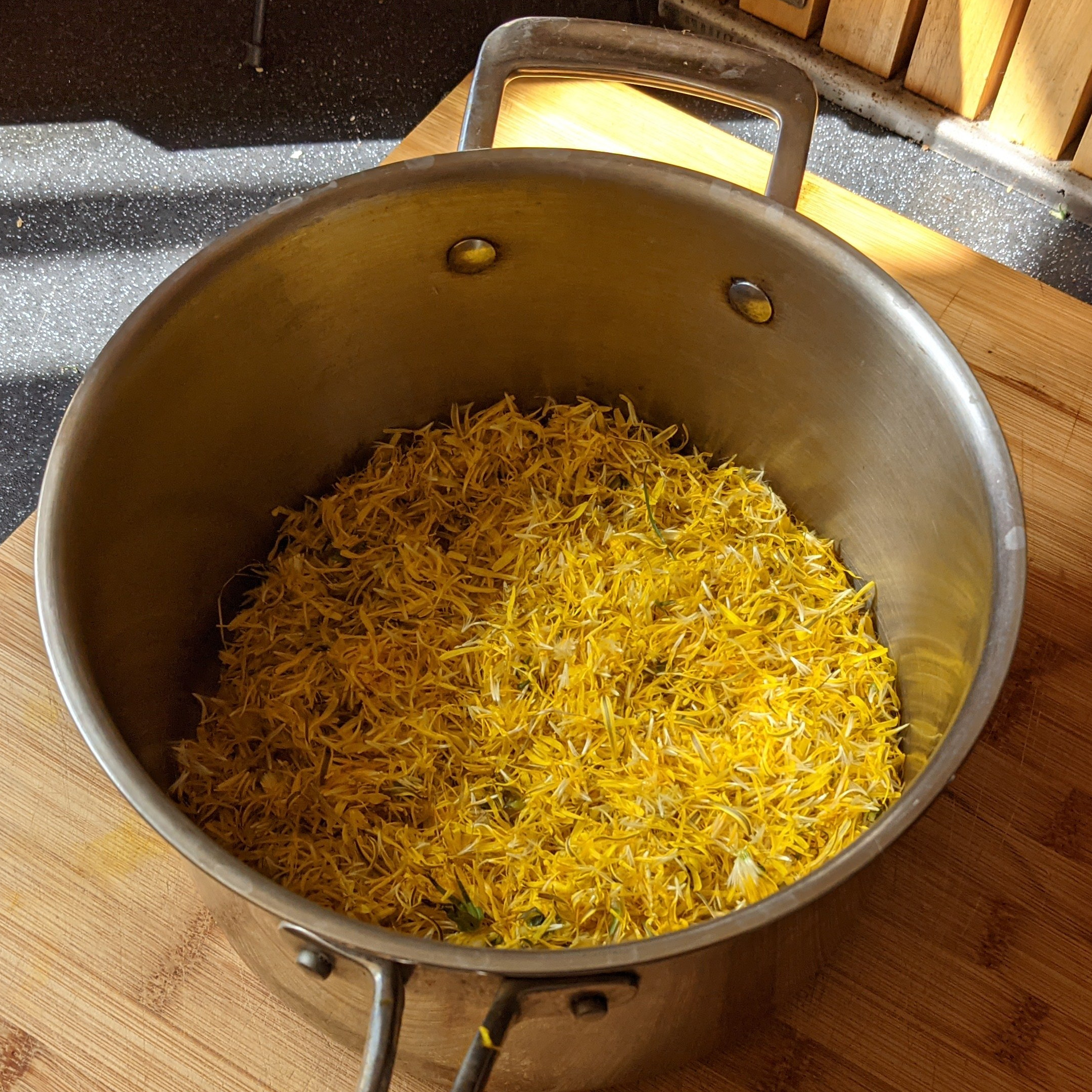
-
I steeped the dandelion petals in 1750ml cold water overnight to make a 'tea' then strained them into another pot using cheesecloth. To this I added the other ingredients and boiled the mixture to dissolve the sugars.
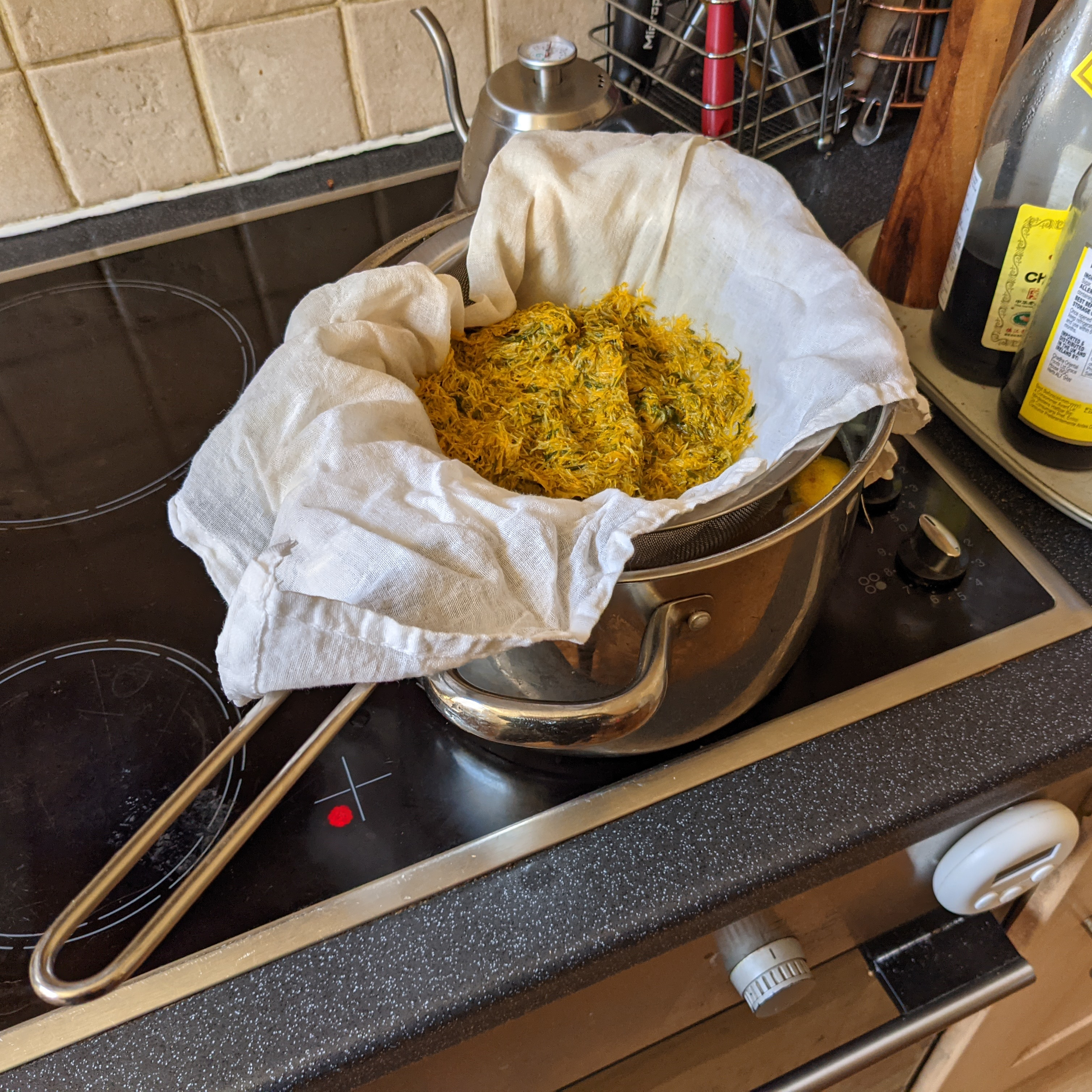

-
From now on everything coming in contact with the mixture must be sanitised. Then I took an opening gravity measurement of 1.080°. At this point I transferred it to a bucket and let it cool to room temperature before pitching the yeast (this is important because if it's too hot it will kill the yeast). This will be in the bucket for a week in an aerobic ferment, you might want to swirl the bucket around a little to get more air in too. I started the brew 25/04/2021 and aerobic fermented until 02/05/2021.
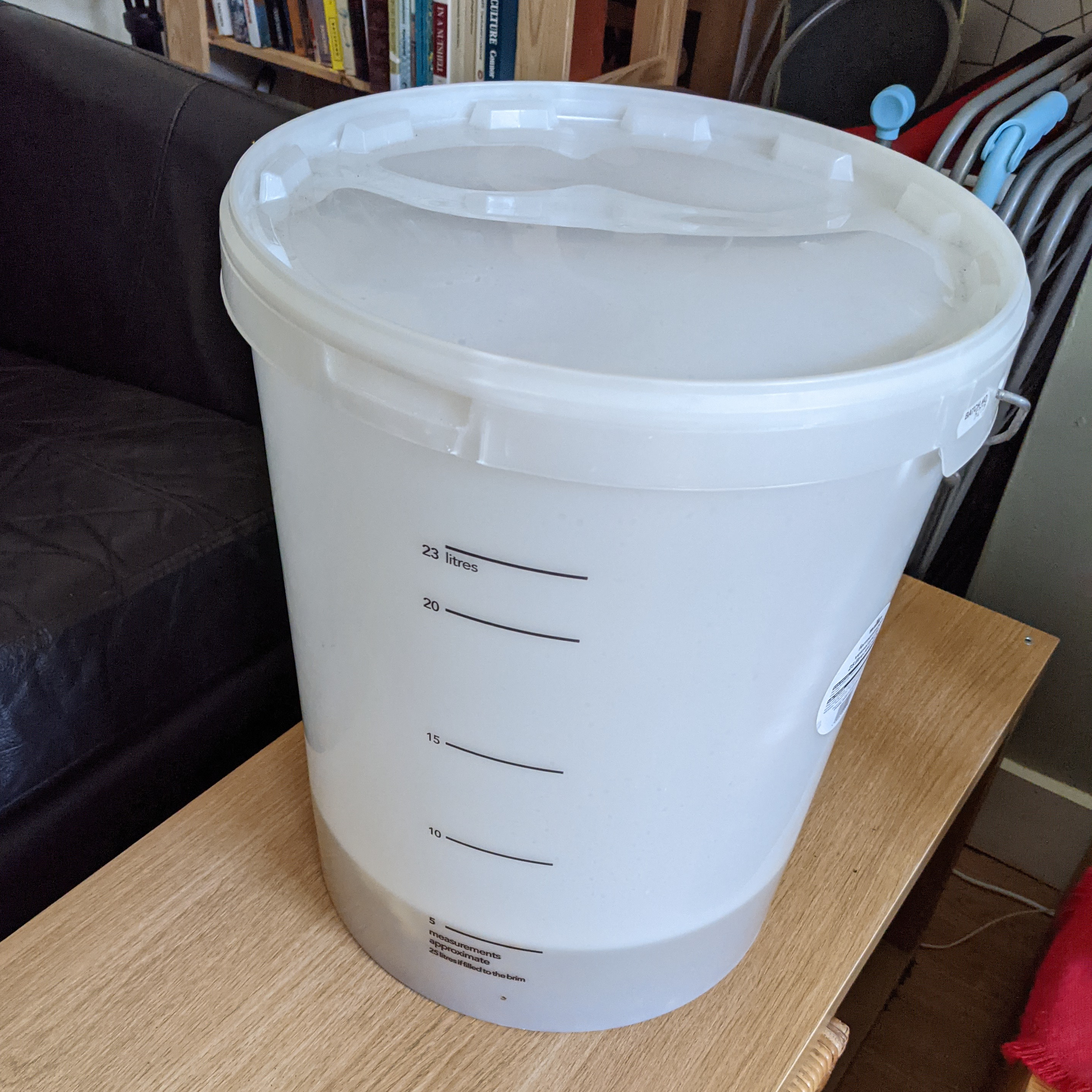

-
After this I racked the wine into a demijohn with an airlock and fermented for close to two months. When racking leave behind all rinds and raisins.

-
Before bottling adding wine finings (I used chitosan) to clarify the wine is recommended. If there's a lot of settled sediment, you can rack to another container to clear some out.
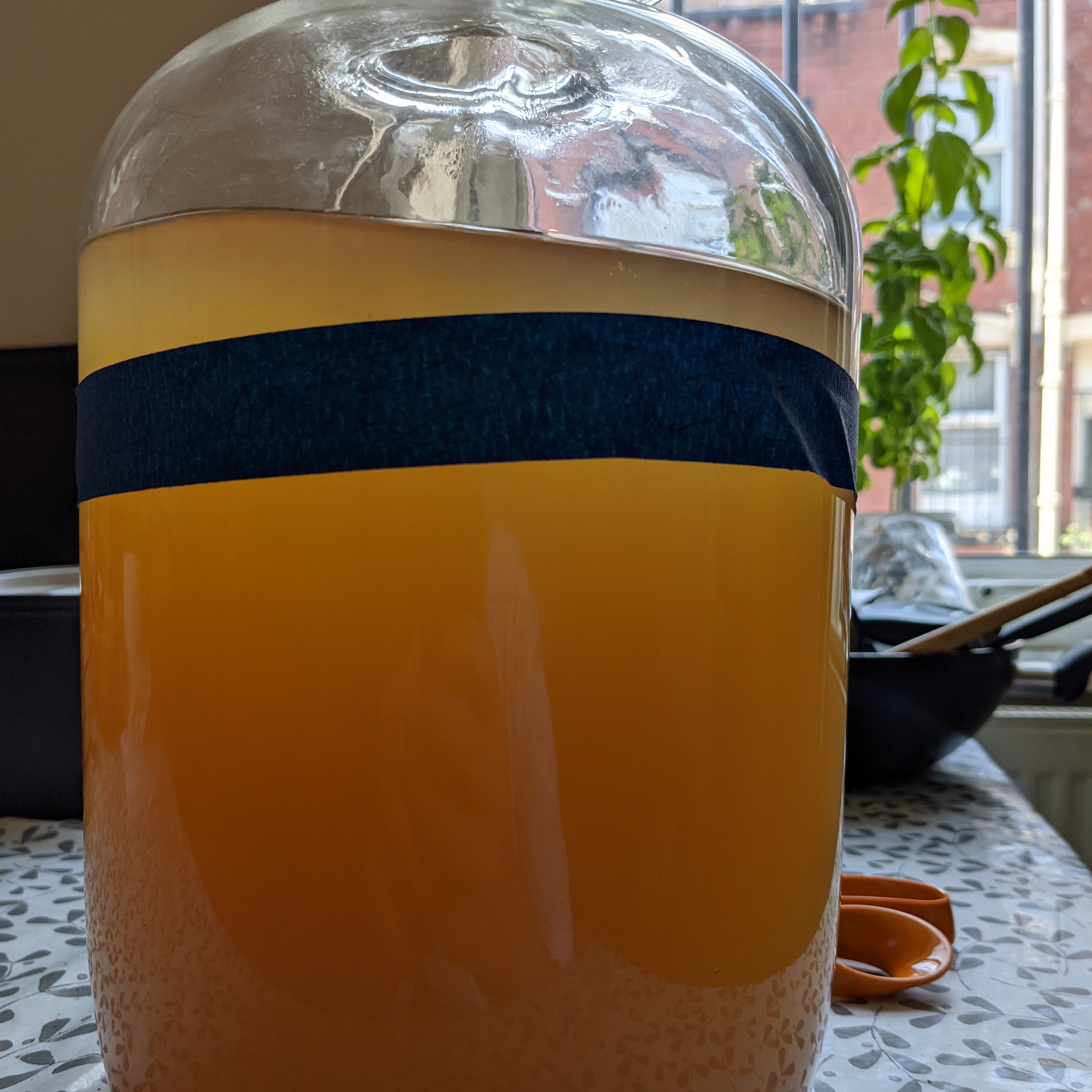
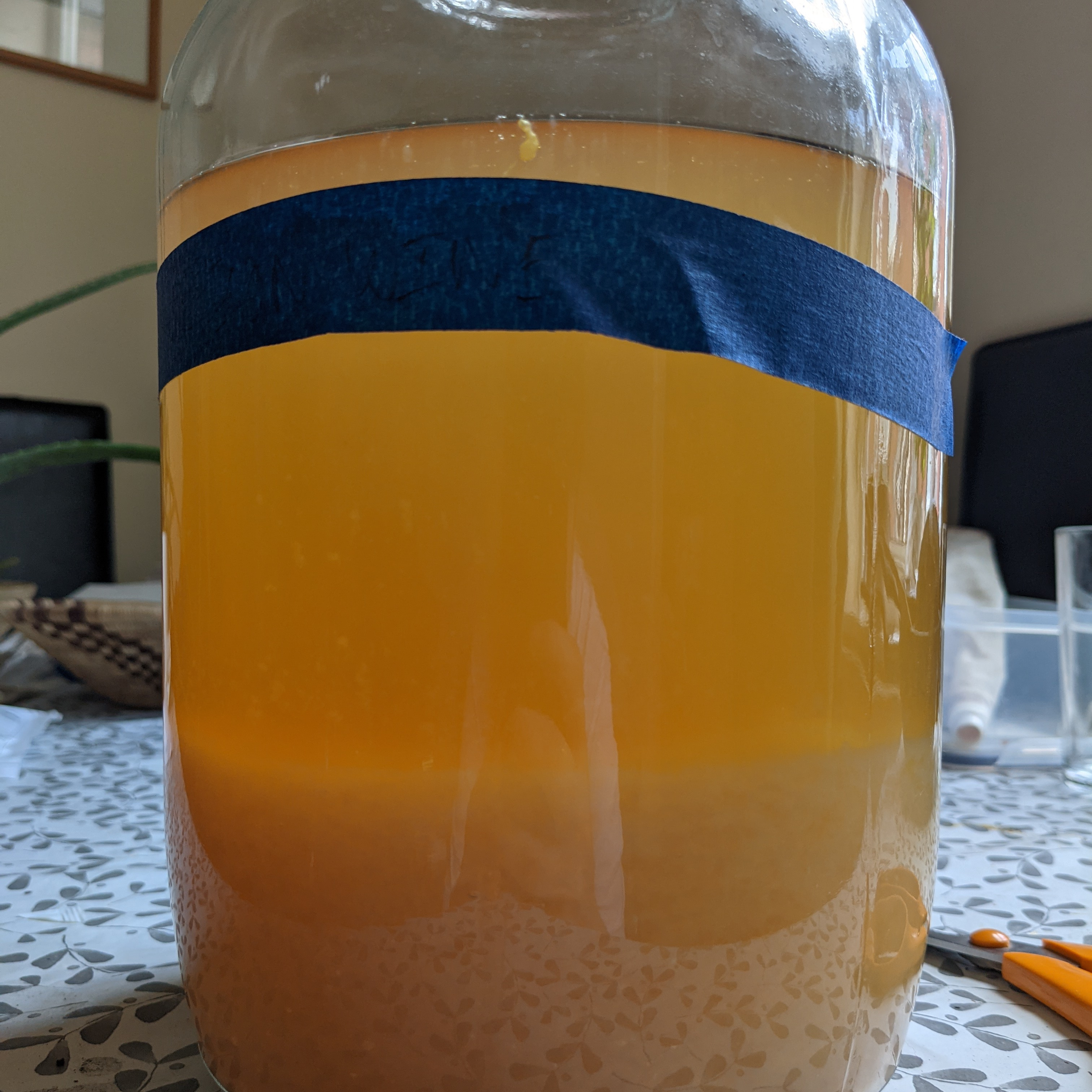
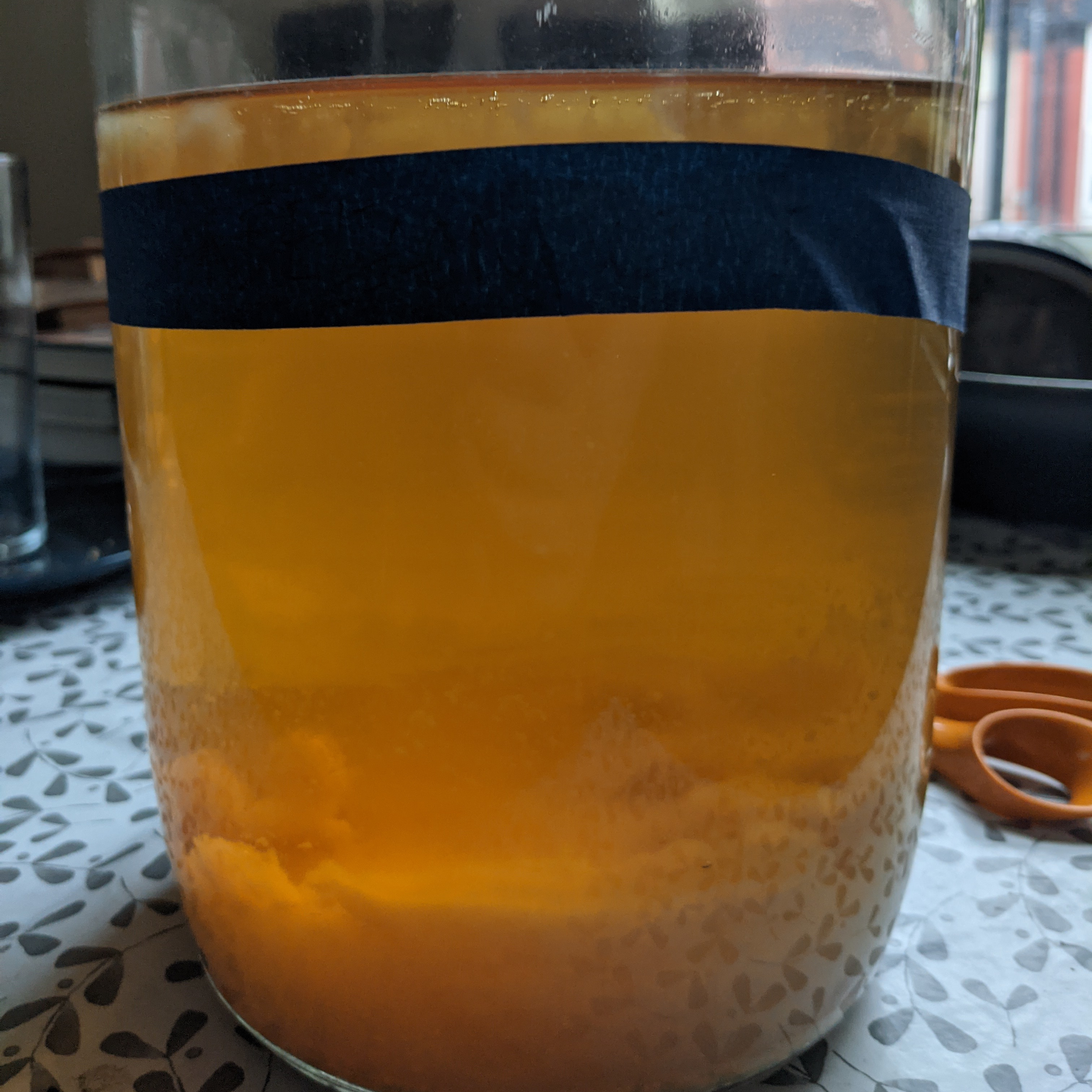
-
I waited until the wine was clear-enough and looked like a clear apple-juice before bottling. Ideally I'd leave it longer but I was rushing to make sure it was finished before moving. In the bottle and in the glass it was very clear. I took a closing gravity measurement of 0.995°, indicating an ABV of 11.16%. (see: here for the maths.) I bottled this on 21/06/2021.
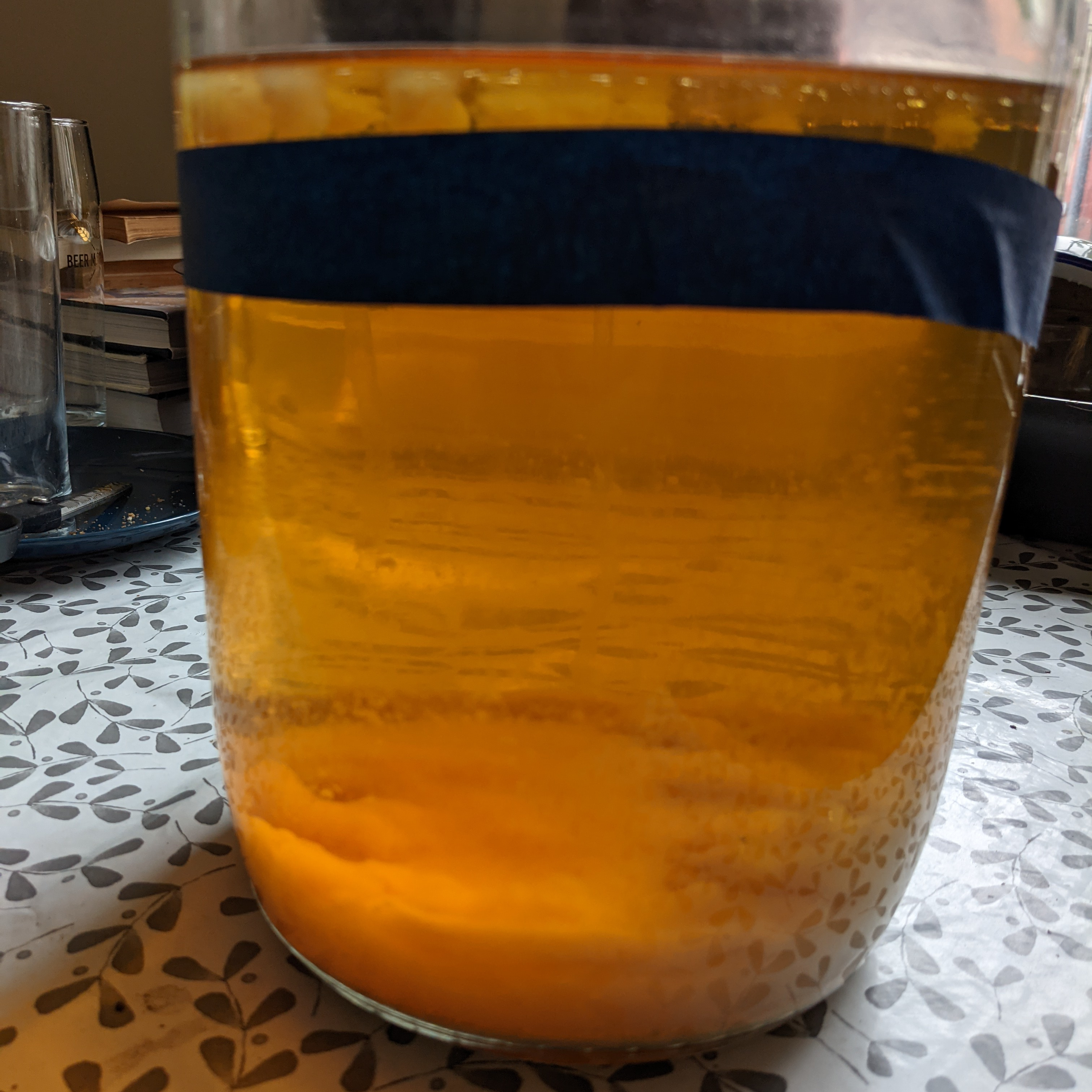
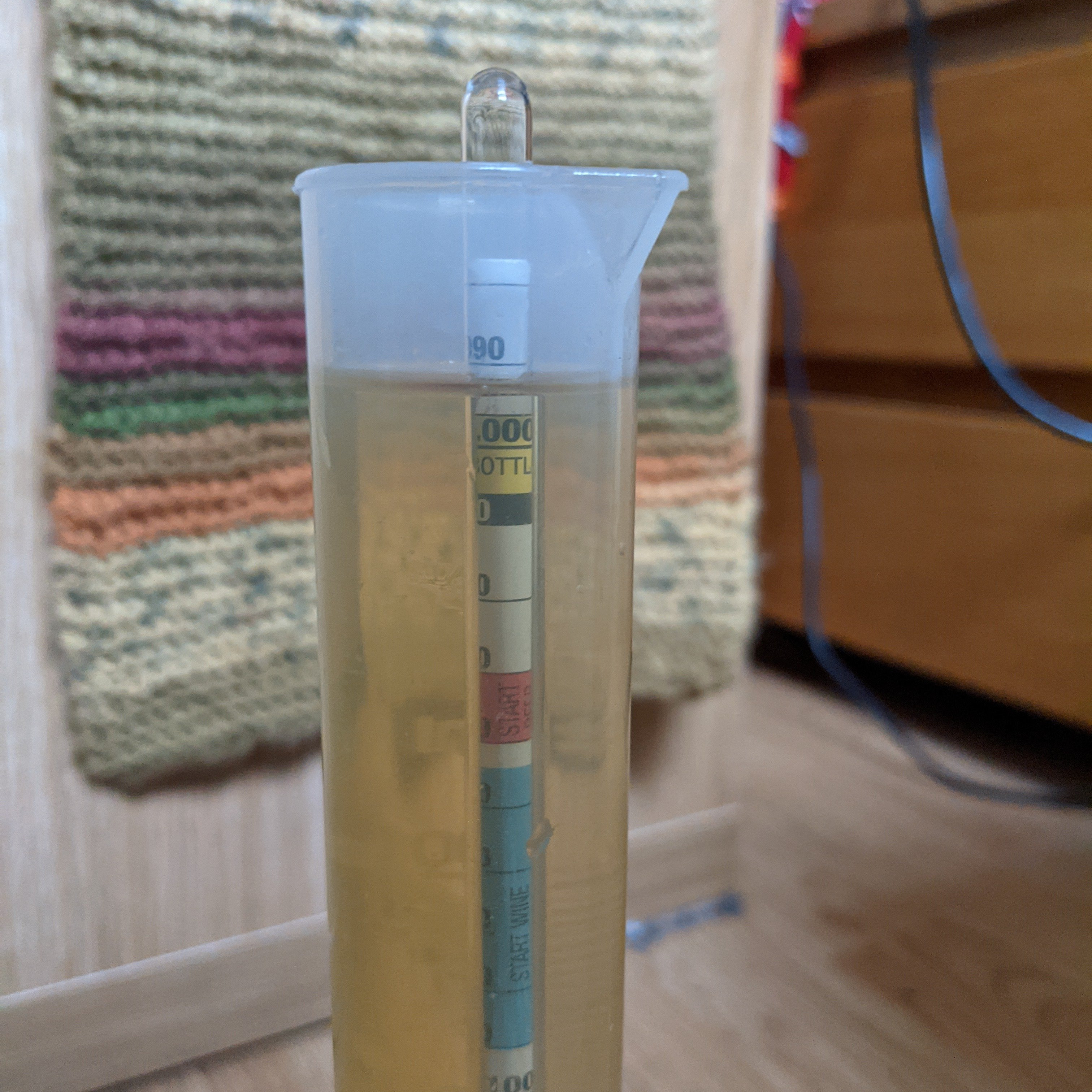
-
Taste-wise this wine is good, floral and honey with some smell of the raisins preserved. The wine is very dry but with some honey added it is quite tasty still, opening up some more fruity notes. Overall nice to drink especially cold. The wine will get better with age too, up to three year according to some sources.
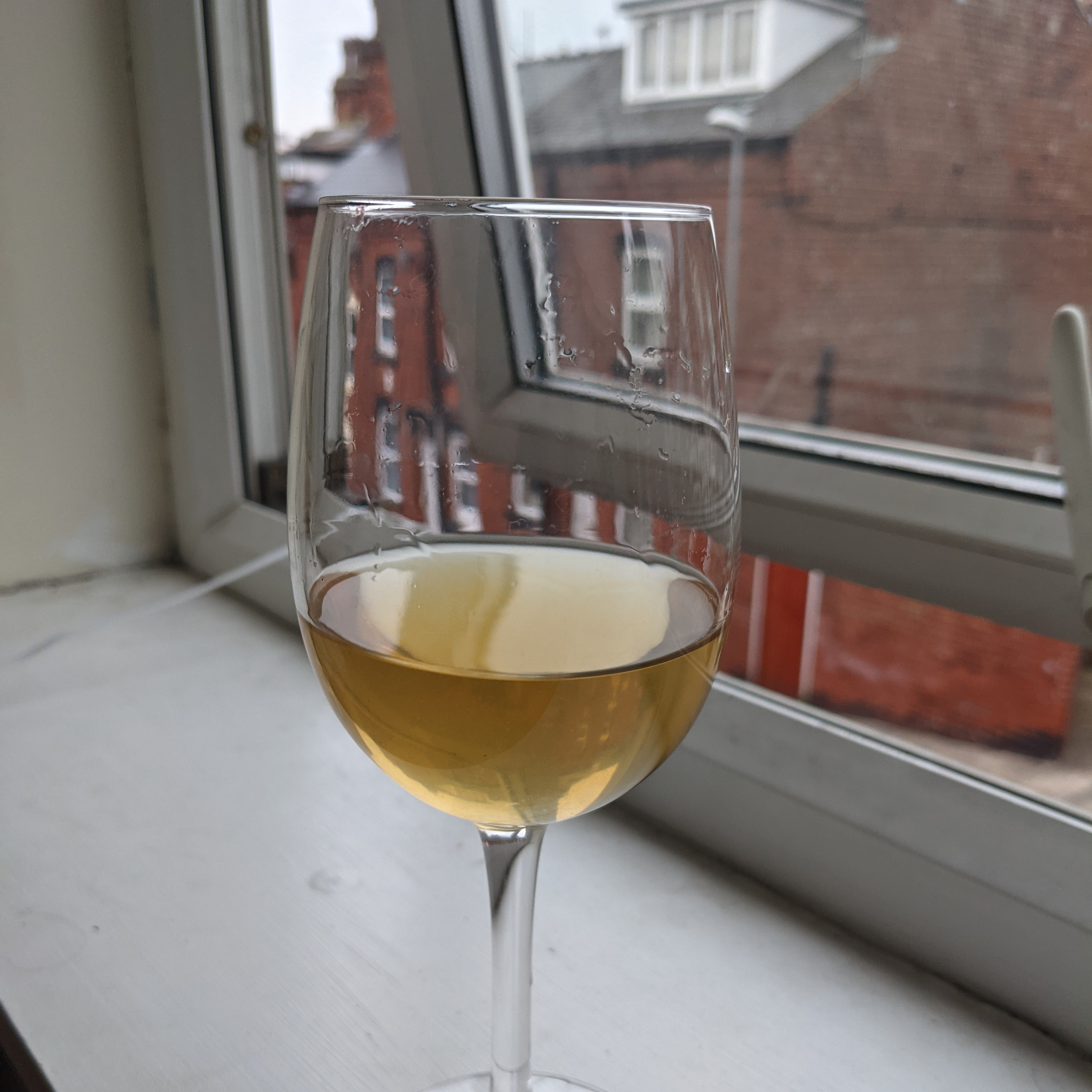
Notes
Next time I would probably start the ferment with more sugar (either dextrose or honey) just to let it perhaps ferment a bit longer and end up less-dry. That being said the brew was a definite success.
Also worth considering adding campden tablets (k-meta) if you wish to store this wine for a long time.